Disclosure: This article contains affiliate links. We may earn a commission from purchases at no extra cost to you, which helps our travel content.
When most travelers think of Zhangjiajie, those otherworldly sandstone pillars that inspired the floating mountains in Avatar immediately come to mind. But after three family trips to China, I've discovered that the real magic lies beyond those magnificent peaks, in the ancient Tujia villages nestled within the valleys. As a nurse who's spent decades observing human connections, I've found that these rural communities offer something far more valuable than just spectacular views—they offer a glimpse into a cultural heritage that has survived for over 2,000 years.
The Tujia People: China's Hidden Cultural Treasure
The Tujia ethnic group, with a population of over 8 million, remains one of China's most fascinating yet least touristed cultural treasures. During my week-long spring exploration with my longtime travel buddy Mike, we ventured beyond the national park crowds to discover villages where traditions remain remarkably intact.
In nursing, we often talk about cultural competence—understanding the values and practices of different communities. This concept took on new meaning as we were welcomed into Tujia homes built in their distinctive diaojiaolou style—wooden structures on stilts that have withstood centuries of changing seasons. These architectural marvels are particularly stunning in spring when surrounded by blooming peach and plum trees.
Before our trip, I spent evenings researching with my travel tea set, sipping oolong while learning about Tujia history. This compact ceramic set became our companion throughout the journey, allowing us to share tea ceremonies with locals—an instant connection-maker that transcended language barriers.
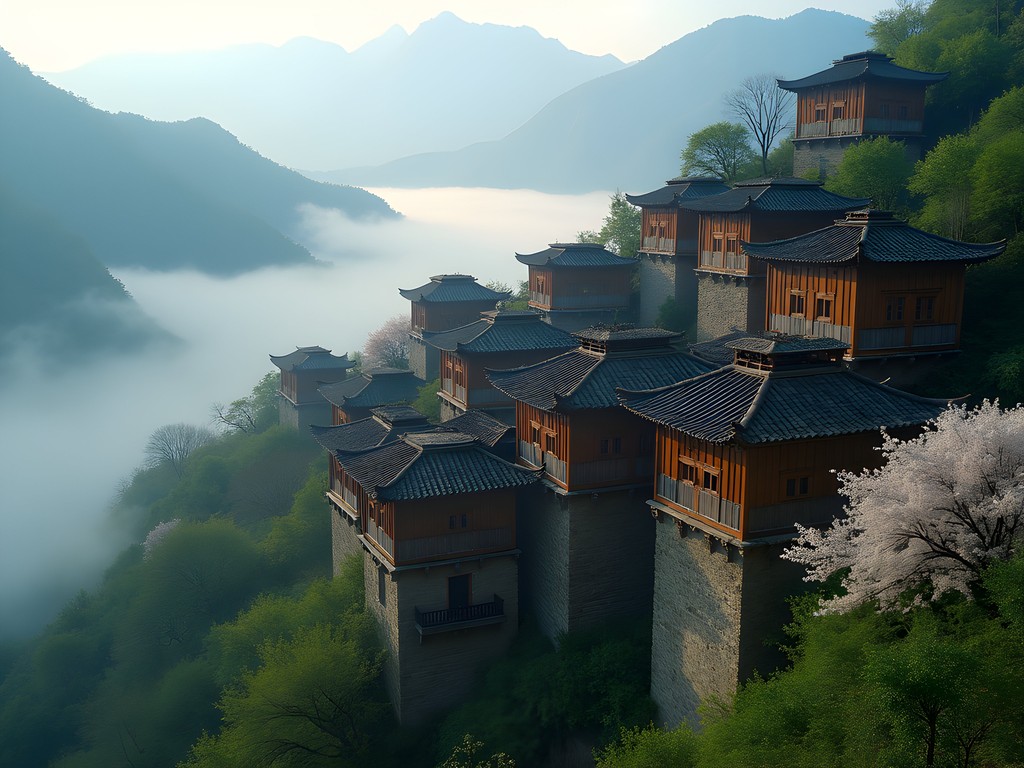
💡 Pro Tips
- Learn a few basic Tujia greetings—even simple efforts are deeply appreciated
- Bring small gifts from your home country for hosts if staying in homestays
- Always ask permission before photographing people or their homes
Experiencing the Baishou Dance: Medicine for the Soul
As a healthcare professional, I often tell my patients that movement is medicine. For the Tujia people, their traditional Baishou Dance is exactly that—a rhythmic, hand-swaying performance that serves as both cultural expression and communal therapy.
On our third evening, we were invited to a local celebration in Maogusi Village, about 30 kilometers from the main tourist areas. The village elder, noticing my genuine interest in their traditions, insisted I join the circle of dancers. With 70+ hand gestures representing everything from hunting to harvesting, I was admittedly clumsy, but the laughter this generated broke down any remaining barriers between us as visitors and them as hosts.
I captured these moments with my pocket translator, which not only helped us communicate but also recorded and translated the explanations of each dance movement. This small device proved invaluable throughout our trip, especially in rural areas where English speakers were rare.
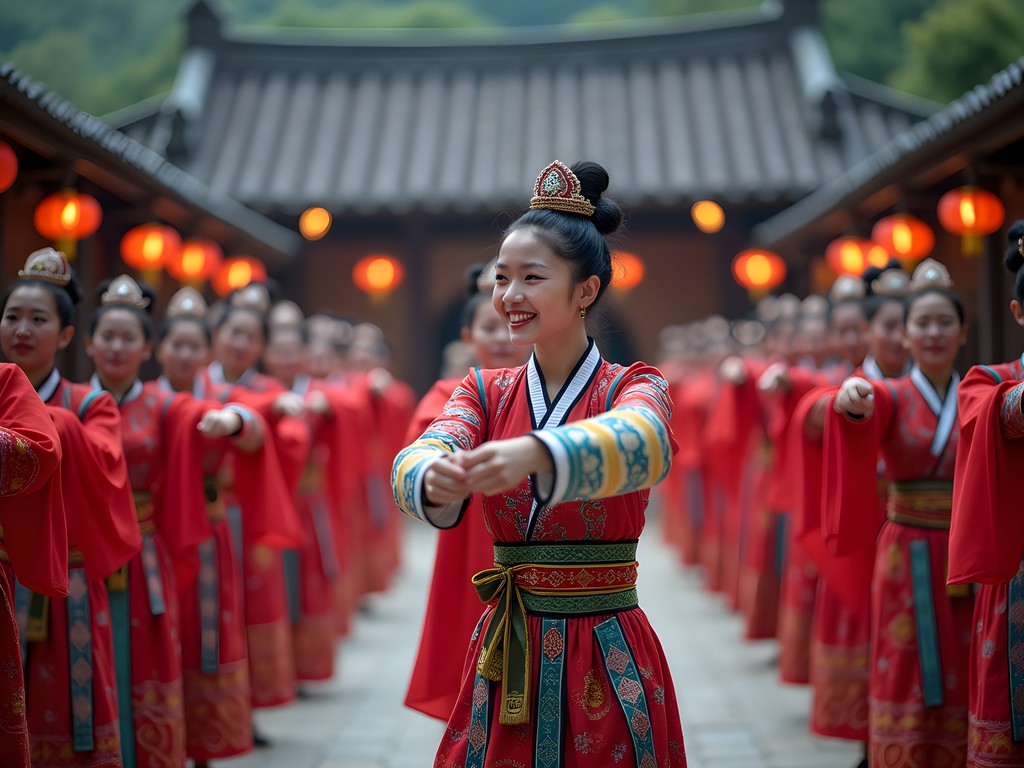
💡 Pro Tips
- Join in cultural activities when invited—participation is valued over perfection
- Visit villages on festival dates for the most authentic cultural experiences
- Bring comfortable shoes suitable for uneven village paths and impromptu dancing
The Craft of Brocade Weaving: Threads of History
In my years of nursing, I've learned that healing often comes through working with your hands. The Tujia women demonstrate this wisdom through their brocade weaving—an art form so significant that it's been designated as an Intangible Cultural Heritage by UNESCO.
In Xilangtang Village, we spent a full day with Master Weaver Auntie Liu (as she insisted we call her). At 78, her fingers moved with the precision of a surgeon as she created intricate patterns without any written designs. "The patterns live here," she told us through our translator, pointing to her heart.
I was particularly moved by how weaving connects generations of women. Young girls sat beside grandmothers, learning techniques unchanged for centuries. My travel sketchbook became filled with drawings of their patterns and notes on the cultural significance of each motif. The watercolor pages perfectly captured the vibrant dyes they create from local plants.
When Auntie Liu insisted I try weaving, my nurse's hands—accustomed to precision—still fumbled with the ancient loom, much to everyone's amusement. The resulting uneven swatch now hangs in my home office—a reminder that some skills take generations to perfect.

💡 Pro Tips
- Purchase authentic brocade directly from weavers to support the continuation of this art form
- Allow at least half a day for weaving demonstrations to truly appreciate the complexity
- Ask about the meaning behind different patterns—each tells a specific cultural story
Tujia Cuisine: Medicine on a Plate
As a nurse, I've always believed that food is our first medicine. The Tujia cuisine embodies this philosophy perfectly, with dishes designed not just for flavor but for wellness. Spring is particularly special for Tujia food, as wild herbs and vegetables that have been used medicinally for centuries emerge in abundance.
In Laojiazhai Village, we participated in a cooking class where we learned to prepare Sanxiaguo (Three Gorges Pot)—a slow-cooked stew of local ingredients served in a distinctive clay pot. What fascinated me most was how the villagers could identify dozens of wild plants and their specific health benefits.
Our host, Mr. Zhang, took us foraging before cooking, showing us how to identify edible ferns and fungi that would become part of our meal. I used my foraging bag to gather ingredients, which earned approving nods from the locals who used similar traditional baskets.
The meal preparation became a community event, with neighbors dropping by to add ingredients or techniques. We chopped vegetables with their traditional Chinese cleaver, which I later purchased as a practical souvenir. The weight and balance of this knife made vegetable preparation surprisingly efficient, and it's now become my favorite kitchen tool at home.

💡 Pro Tips
- Join a local cooking class that includes foraging for ingredients
- Try the fermented glutinous rice wine (mi jiu) but pace yourself—it's stronger than it tastes
- Book homestays that include meals for the most authentic culinary experiences
Homestays: The True Pulse of Tujia Life
After 15 years of family travel, I've learned that accommodations aren't just places to sleep—they're portals into local life. In Zhangjiajie's Tujia villages, homestays offer the most authentic window into this ancient culture.
We split our week between three different homestays, each offering a unique perspective on Tujia life. My favorite was the Zhang family home in Dehang Village, where three generations lived under one roof in a 200-year-old wooden structure. The grandmother insisted on heating water for our evening foot baths—a traditional welcome ritual that my nurse's feet greatly appreciated after long days of exploration.
Communication challenges were eased by my translation cards, which feature illustrated common phrases. When digital translation failed in areas with poor connectivity, these waterproof cards bridged the gap with surprising effectiveness.
Sleeping arrangements in Tujia homes are simple but comfortable. I was grateful for my silk sleep liner which provided additional comfort while being respectful of the bedding provided by our hosts. The natural silk also regulated temperature perfectly during spring nights that fluctuated between cool and warm.

💡 Pro Tips
- Bring small household gifts from your home country for your hosts
- Learn to say 'delicious' in Chinese (hǎo chī) to show appreciation for meals
- Request a home with a traditional Tujia fireplace room for the full cultural experience
Final Thoughts
As our week among the Tujia villages of Zhangjiajie came to an end, I found myself reflecting on what we'd gained beyond photographs and souvenirs. In my years as both a nurse and a traveler, I've learned that the most profound healing often comes through human connection—something the Tujia people offer in abundance despite material simplicity.
The villages surrounding Zhangjiajie's famous peaks hold wisdom that can't be captured in a quick tour or Instagram post. They require time, respect, and genuine curiosity. While the magnificent karst formations will certainly take your breath away, it's in these ancient communities where you'll find your breath again—deeper and more connected to something timeless.
For couples seeking to strengthen their bond through travel, these villages offer a perfect backdrop for meaningful connection. Away from digital distractions and tourist crowds, you'll find yourselves having conversations that matter, learning new skills together, and creating memories that transcend the ordinary. Just as I've watched these experiences transform my relationships over the years, I'm confident they'll enrich yours as well. The Tujia have a saying that translates roughly to "a shared path reveals shared hearts"—wisdom worth traveling halfway around the world to discover.
✨ Key Takeaways
- Venture beyond Zhangjiajie National Park to experience authentic Tujia culture in surrounding villages
- Spring offers ideal weather plus the bonus of traditional planting festivals and ceremonies
- Homestays provide deeper cultural immersion than hotels and directly support local communities
- Learning even basic Mandarin phrases significantly enhances the connection with local people
- The Tujia cultural experiences offer couples unique opportunities to bond through shared learning
📋 Practical Information
Best Time to Visit
Spring (April-May) for comfortable temperatures and cultural festivals
Budget Estimate
$75-150 per day per couple including homestays, meals, and local transportation
Recommended Duration
5-7 days to balance park visits with village experiences
Difficulty Level
Moderate (Requires Basic Fitness For Village Walks And Cultural Openness)

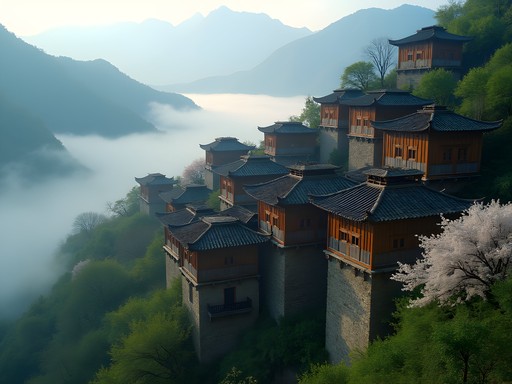
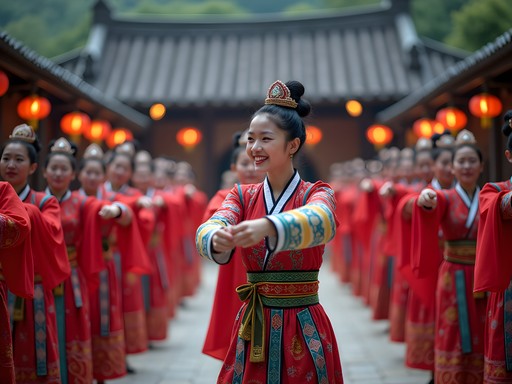
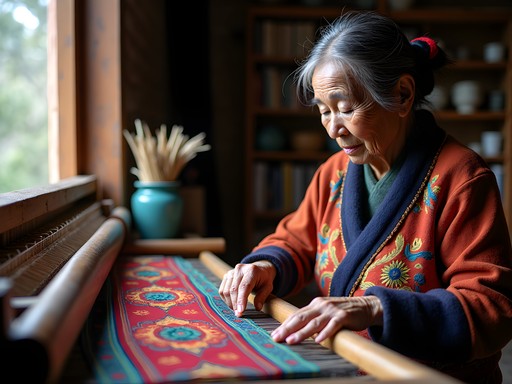
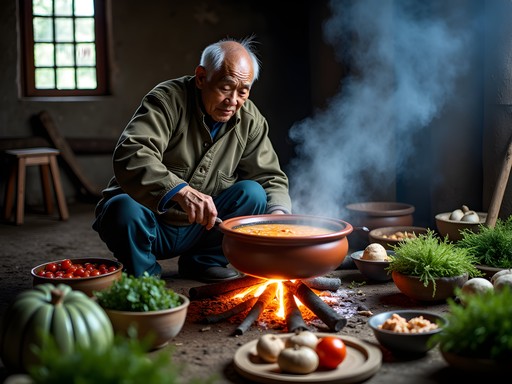










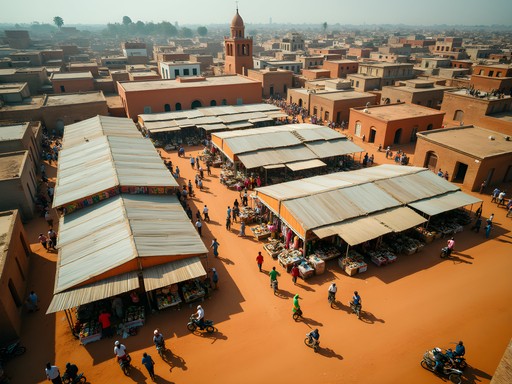
Comments
globeexplorer
Those photos of the brocade weaving are incredible! Never knew about this side of Zhangjiajie!
Douglas Bradley
This brings back memories of my research trip to Zhangjiajie last year! The Tujia cultural preservation efforts are fascinating, especially how they're balancing tourism with authenticity. I spent three days in a homestay in Lujia village where an elderly woman taught me about the symbolic meanings in their brocade patterns - each representing different aspects of their cosmology and history. If you're serious about experiencing Tujia culture, I'd recommend staying at least one night in a village rather than day-tripping from the city. The evening activities and family meals provide insights you'd otherwise miss. I used this phrasebook which had a small section on Tujia greetings that proved incredibly useful for connecting with locals.
bluelife
That homestay sounds amazing! Did you arrange it beforehand or find it when you got there?
Douglas Bradley
I arranged it through a local tourism office in Zhangjiajie city, but I've heard some guesthouses can set them up too. Just make sure they're authentic homestays and not commercial operations designed to look traditional!
skylife
Those Baishou Dance photos are incredible! Adding this to my bucket list right now.
wildstar
Love this! The Avatar mountains get all the attention but this cultural stuff looks way more interesting!
bluelife
Your section on Tujia cuisine has me intrigued! Did you try that smoked pork dish? Was it very spicy? My partner can't handle heat but we'd love to explore the food culture there.
Hayden James
Yes, we tried the smoked pork (larou) and it was delicious! The spice level varies by restaurant, but you can always ask them to prepare a milder version. The blood tofu and rice cakes are more mild options that still give you that authentic experience. Most restaurants are very accommodating if you mention spice sensitivity.
nomadclimber8320
Great post! I'm headed to Zhangjiajie next month but mainly planned for the national park. Are these Tujia villages easy to reach without a guide? Would love to experience that Baishou dance you mentioned!
Hayden James
Thanks! Some villages like Wulingyuan and Tianzishan are accessible by public bus from the city center. For the more remote ones where we saw the authentic Baishou performances, we hired a local driver through our guesthouse. Most performances happen on weekends or during festivals, so plan accordingly!
nomadclimber8320
Perfect, thanks for the tips! I'll ask my hostel about arranging transportation.
sunsetexplorer
Great post! I'm wondering about the best time to visit these villages? Are they accessible year-round or is there a season when the cultural activities are more vibrant? Also curious if you found any good souvenirs from the brocade weavers?
Hayden James
Spring and fall are ideal - comfortable weather and fewer tourists. And yes! I bought several brocade pieces - they make perfect gifts and support the local artisans directly.
Kimberly Murphy
Hayden, this brought back so many memories! I spent two weeks in the Zhangjiajie region last year, and the Tujia cultural experiences were definitely the highlight. The food especially - that sour fish soup you mentioned was a revelation! Did you get to try the 'smoking meat' that's hung in those distinctive wooden houses? Also, for anyone planning a trip, I highly recommend staying at least one night in a traditional Tujia home. Many families offer homestays now, and it's such an immersive way to experience their hospitality. The sunrise views from those hillside villages are worth the early wake-up!
skylife
Did you book the homestay in advance or find it when you got there? Sounds amazing!
Kimberly Murphy
I arranged it through a local guide in Zhangjiajie city, but I've heard some are now on booking sites too. Just search for 'Tujia homestay'!
wanderguy
Those pictures of the brocade weaving are incredible! Never knew about this side of Zhangjiajie.
Frank Garcia
Brilliant write-up on the cultural aspects of Zhangjiajie! I visited last year and completely missed the Tujia villages, focusing only on the famous mountains. Now I feel I need to go back. The Baishou Dance sounds particularly fascinating - the way you described it as 'medicine for the soul' really captures something special. Did you find any language barriers when trying to engage with the local Tujia people? I found communication challenging in rural China despite having my translation device with me.
Venture X
Premium card with 2X miles, $300 travel credit, Priority Pass